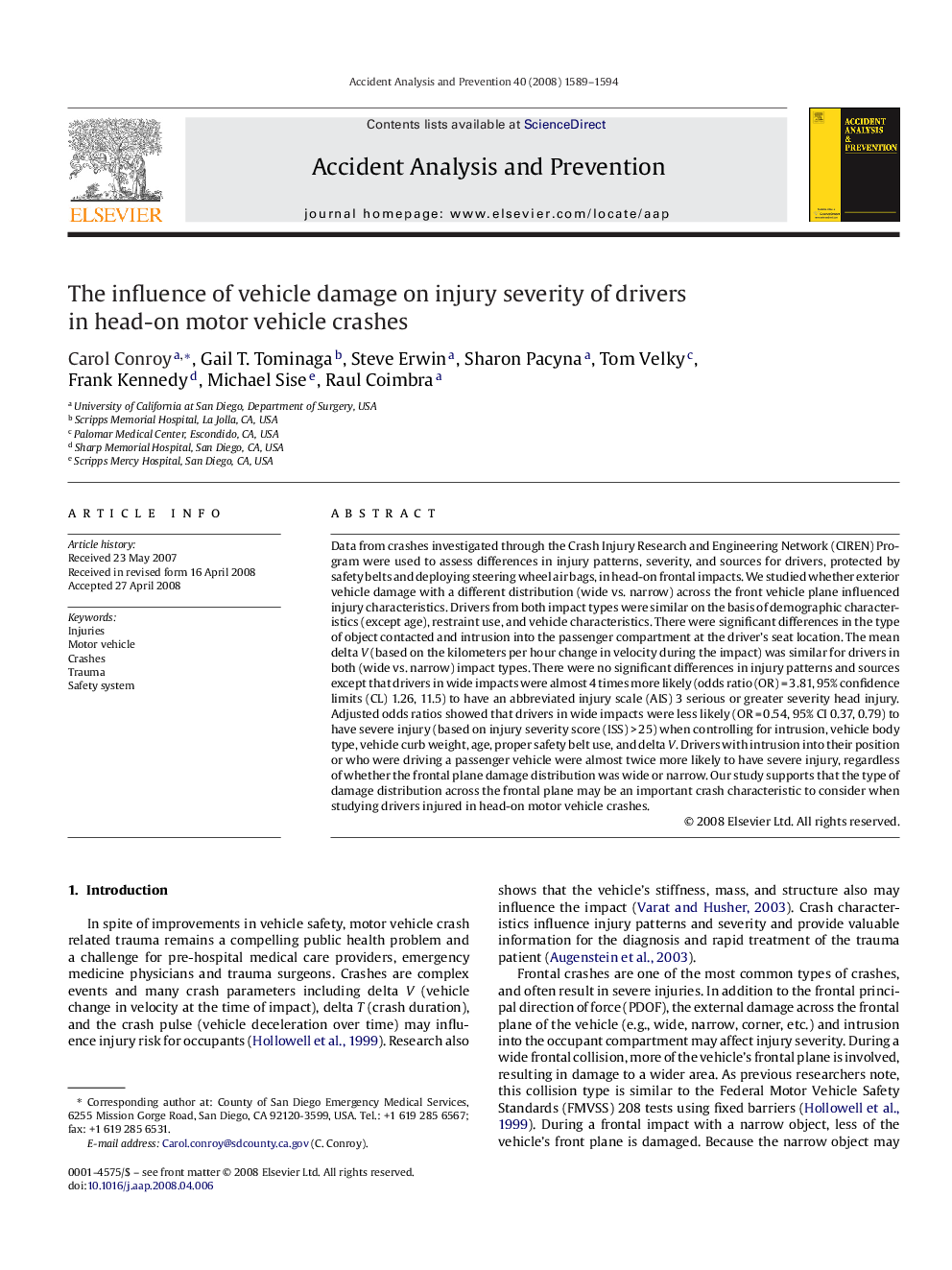| Article ID | Journal | Published Year | Pages | File Type |
|---|---|---|---|---|
| 573627 | Accident Analysis & Prevention | 2008 | 6 Pages |
Data from crashes investigated through the Crash Injury Research and Engineering Network (CIREN) Program were used to assess differences in injury patterns, severity, and sources for drivers, protected by safety belts and deploying steering wheel air bags, in head-on frontal impacts. We studied whether exterior vehicle damage with a different distribution (wide vs. narrow) across the front vehicle plane influenced injury characteristics. Drivers from both impact types were similar on the basis of demographic characteristics (except age), restraint use, and vehicle characteristics. There were significant differences in the type of object contacted and intrusion into the passenger compartment at the driver's seat location. The mean delta V (based on the kilometers per hour change in velocity during the impact) was similar for drivers in both (wide vs. narrow) impact types. There were no significant differences in injury patterns and sources except that drivers in wide impacts were almost 4 times more likely (odds ratio (OR) = 3.81, 95% confidence limits (CL) 1.26, 11.5) to have an abbreviated injury scale (AIS) 3 serious or greater severity head injury. Adjusted odds ratios showed that drivers in wide impacts were less likely (OR = 0.54, 95% CI 0.37, 0.79) to have severe injury (based on injury severity score (ISS) > 25) when controlling for intrusion, vehicle body type, vehicle curb weight, age, proper safety belt use, and delta V. Drivers with intrusion into their position or who were driving a passenger vehicle were almost twice more likely to have severe injury, regardless of whether the frontal plane damage distribution was wide or narrow. Our study supports that the type of damage distribution across the frontal plane may be an important crash characteristic to consider when studying drivers injured in head-on motor vehicle crashes.
